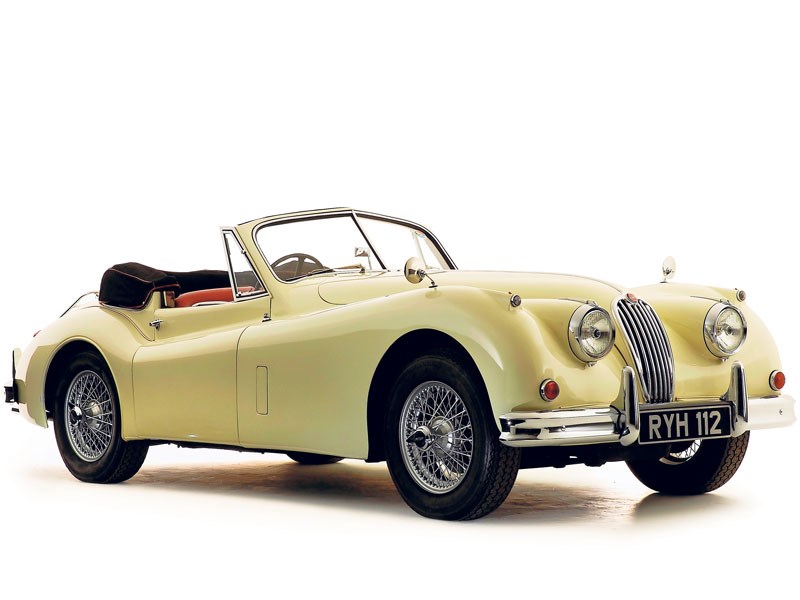The epitome of 1950s sophistication, we take a look at the XK140...
Jaguar was keen to build on the success of its revered XK120 and the job of replacing it fell to the XK140, launched in September 1954. While the beautifully flowing lines may have looked familiar, there were plenty of changes under the skin that brought useful improvements. Chief among these was moving the engine forward, which released a crucial few inches of extra legroom in the cabin. Mechanical changes included a more powerful engine, and an improved steering and suspension set-up for sharper handling.
VITAL STATISTICS
Jaguar XK140
Engine 3442cc/6-cyl/DOHC
Power (bhp@rpm) 190bhp@5750rpm
Torque (lb ft@rpm) 213lb ft@4000rpm
Top speed 127mph
0-60mph 11sec
Consumption 21mpg
Gearbox 4-speed manual
WHAT TO LOOK FOR
BODYWORK & CHASSIS
Rot is one of the biggest issues with any XK and this model is no exception. Specialists reckon that the lower six inches of bodywork is where most care is needed, and with the potential for huge restoration costs, it pays to be diligent. Problem areas include the headlamp surrounds and front wings, door bottoms, floorpan, boot floor and inner wings.
The sills, particularly around the B-post need checking, as does the A-Frame around the door hinges. The chassis should also come in for close inspection as rot can spread quickly through box sections and chassis rails, and you should also watch for any signs of twisting. Checking for an even gap where the front torsion bar springs run parallel to the chassis will give a good idea of any problems here. Getting a specialist to check over a potential purchase would be money very well spent.
ENGINE
The XK engine is well-proven and fundamentally strong with proper care. Oil leaks are common but rarely prove serious. A check for excessive blue smoke on the over-run will warn of major internal wear. Oil pressure below about 20psi at tickover is a bad sign. Overheating will blow the head gasket and is often caused by a silted-up radiator. Fitment of an electric fan is a popular modification – a healthy cooling system is a must with these engines. You can expect some noise from the tappets and timing chain, but an overhaul beckons if this is excessive. The 210bhp SE model is sought after and adds a useful extra dose of performance.
RUNNING GEAR
The Moss four-speed manual gearbox is a bit slow in operation but otherwise reliable, worn synchromesh being the most likely problem (some owners choose to upgrade to a later five-speed unit). A re-build isn’t cheap, so don’t ignore any issues here – ensure the optional overdrive works if fitted. A three-speed Borg Warner automatic was an option but isn’t hugely popular with buyers.
Changes over the XK120 included telescopic rather than lever arm dampers, and Alford & Adler rack-and-pinion steering instead of the vague recirculating ball arrangement. Neither should give particular trouble, though you need to watch for rot around the front anti-roll bar mountings and the rear spring hangers where they attach to the chassis. Modern poly-bushes in the suspension are a worthwhile upgrade for improved comfort and longevity, and it is worth ensuring that previous owners have kept up the greasing regime.
INTERIOR
Condition is everything when it comes to the cabin of an XK140 as a top quality refurbishment is eye-wateringly expensive. Perhaps more of an issue is aged wiring that not only causes electrical malfunctions but can pose a fire risk too. A complete re-wire is in the region of £2000-2500, but at the very least specialists recommend fitting a battery isolator switch to prevent serious trouble.
OUR VERDICT
Gorgeous to look at and thoroughly accomplished to drive, the XK140 is one of the finest British classics around – at a price! Depending on body style, the very best examples are now comfortably into six figures, which puts them out of reach for all but the well-heeled. Even restoration cases are heading for £30,000 or more. Not a cheap option, but a beautiful classic and a sound investment.



